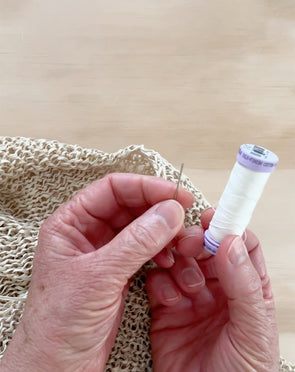Sewing a zipper into a knitted vest or cardigan may seem daunting, but as long as you work slow and steady the process is pretty straightforward - maybe even fun!
In our video tutorial, Julie walks you through the steps of sewing a zipper into a Flynn vest two ways: by machine and by hand. Both versions include pinning, basting, trimming the zipper to size, and finishing.
Yarns used: Machine sewn on a Flynn knit with Bread & Butter Bun + AVFKW Soft Current, and hand sewn on a Flynn in AVFKW Lambkin.















Leave a Comment